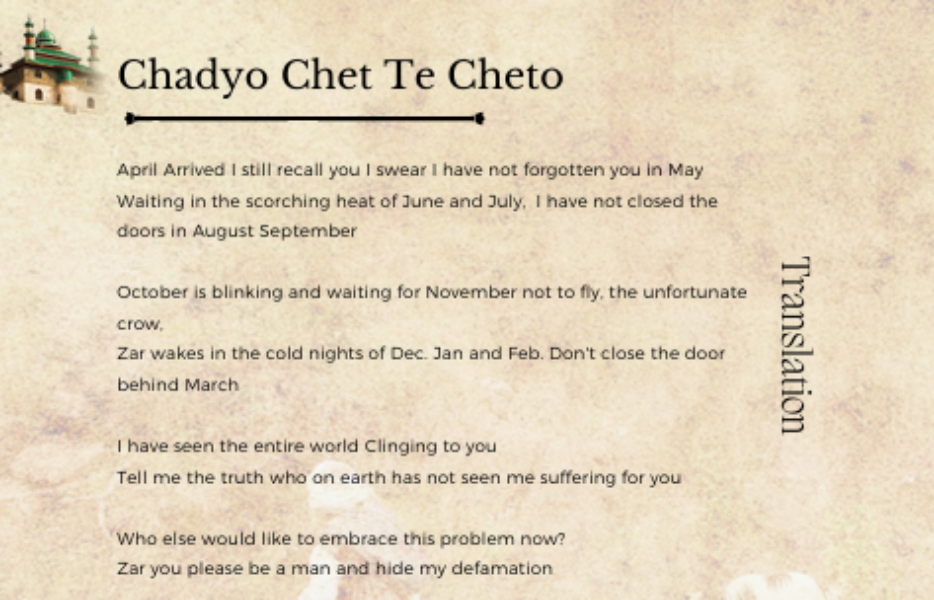
Themes
tribal languages and literature
Chadyo Chet Te Cheto, jammu & kashmir
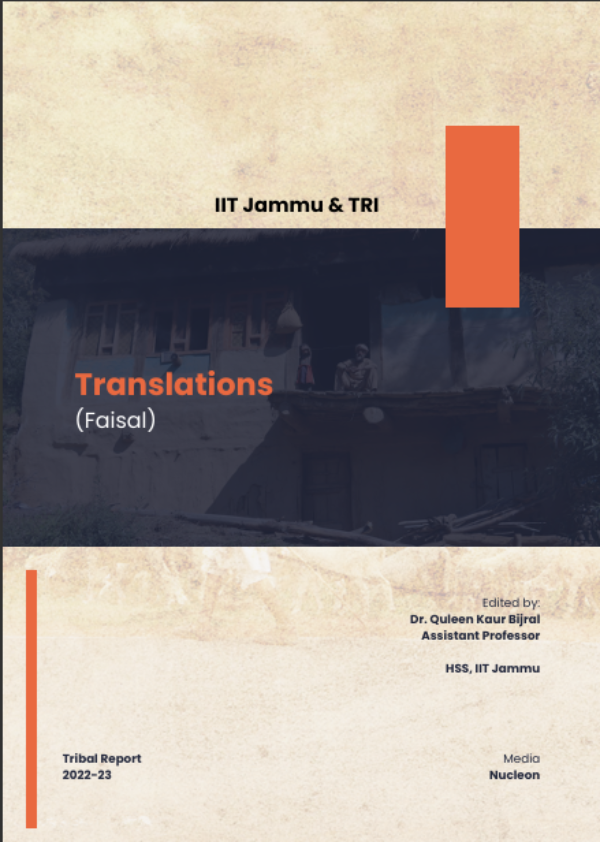
Faisal, the creator of "Chadyo Chet Te Cheto," is a renowned poet known for his excellence in Gojri classical forms and topoi. His poetry mostly addresses unreciprocated love, faithfulness, and identity, interweaving vivid imagery into stories of personal experience. Faisal's style combines Gojri literary styles with universal feelings, making it easy for readers to connect profoundly with his poems. His poems tend to be at the crossroads of nature, time, and human relationships, and he does it to perfection through seasonal and cultural symbols.
"Chadyo Chet Te Cheto" is a Baramah, a Gojri literary tradition that mirrors the twelve months of the year, each representing a unique phase of memory and longing. Every stanza is a representation of seasons changing and time passing, showing how the speaker feels throughout the months. The structure is one of seasonal imagery, and there is a poetic trajectory from spring to winter. The Baramah structure provides the poem with a rhythmic and circular texture, reflecting the monotony and persistence of the speaker's yearning.
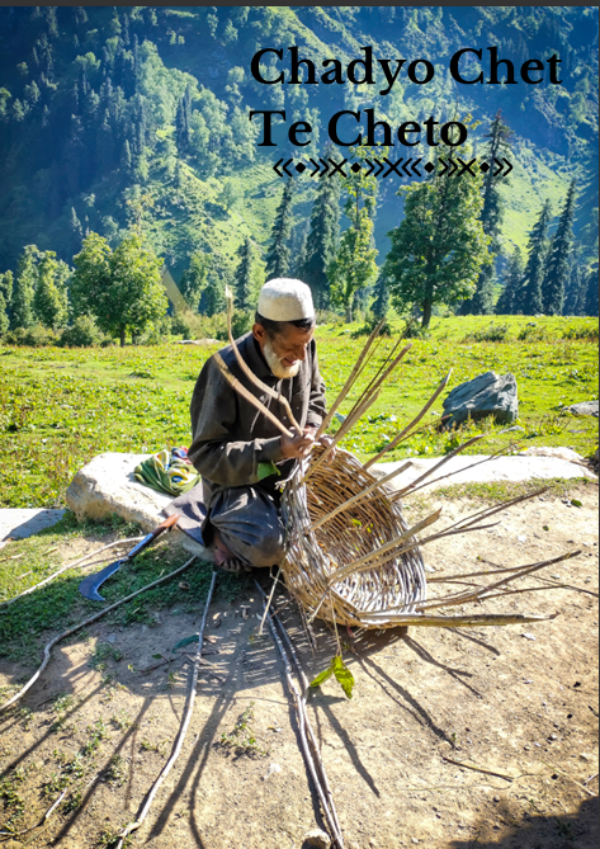
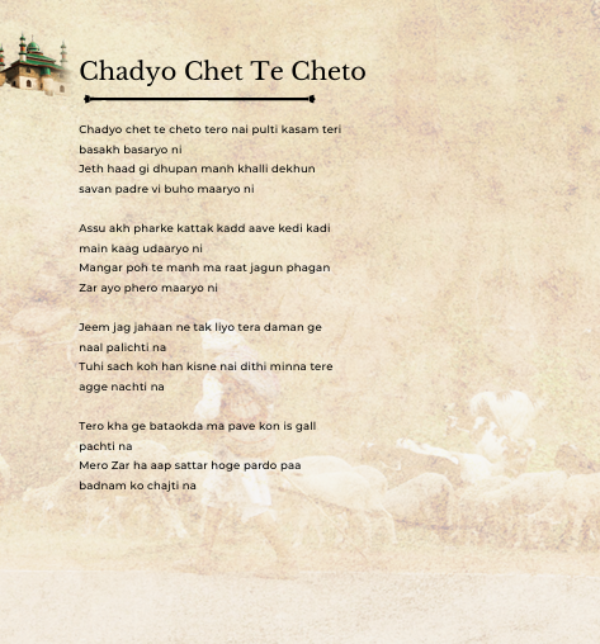
The rhyme scheme of "Chadyo Chet Te Cheto" is loose but organized to provide a natural movement that resonates with the introspection of the speaker through the months. The rhythmic pattern most often follows the Gojri Baramah tradition, where rhyme and repetition reflect the passing of time. While not rigidly structured, it makes the poem sound like a conversation and genuine, highlighting the speaker's persistent grief each season.
The mood of "Chadyo Chet Te Cheto" is nostalgic and longing, in which every month is another step in the speaker's unresolved longing for the loved one. Themes of separation, patience, and hope are intertwined, as the speaker holds fast despite adverse conditions such as the "scorching heat of June and July" or the "rain of August and September." The poem emphasizes love's endurance against time's relentless progress, employing seasonal symbols to describe the speaker's profound and unchanged love.
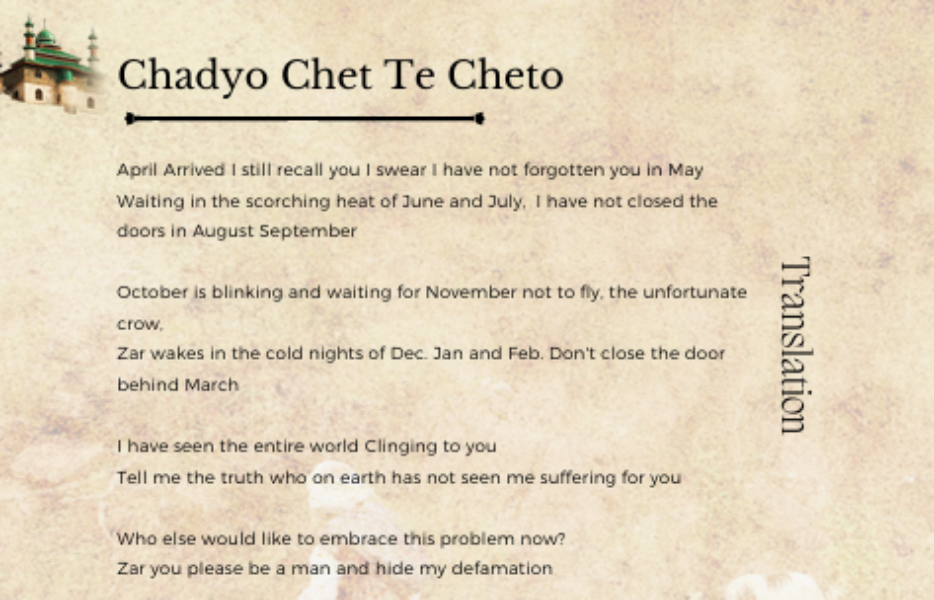
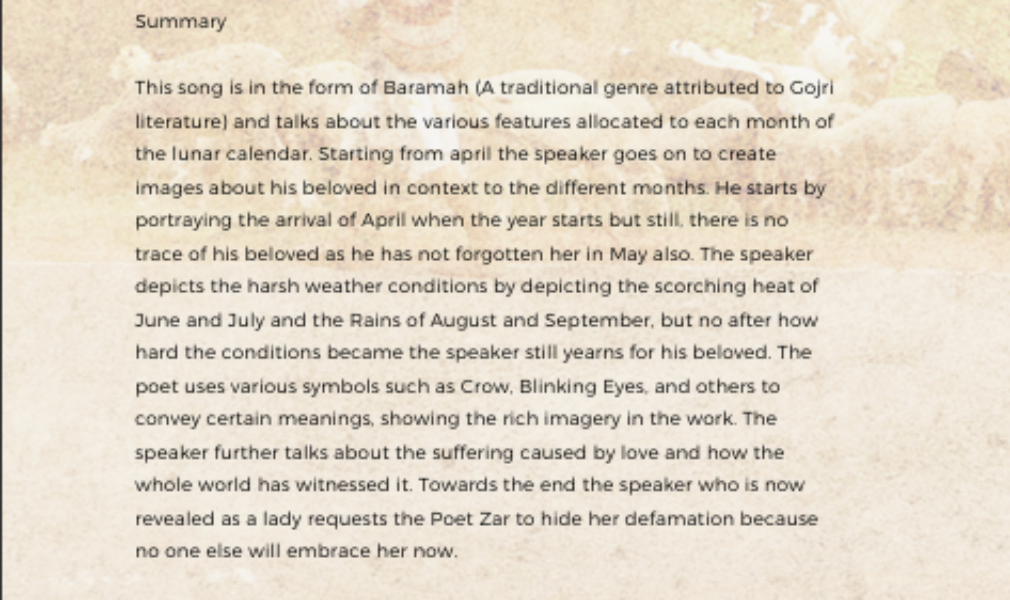
The poem's core theme revolves around the speaker's unchanging love for the beloved, no matter how much time passes or seasons of life change. Faisal masterfully employs monthly transitions and symbols, such as the crow and blinking eyes, to illustrate the speaker's changing sentiments. The poem finally discloses the speaker to be a woman, who pleads with Zar to hide her defamation, as it reflects on the social implications of love being unrequited. This centricity emphasizes love’s resilience amid societal pressures, grounding the poem in the timeless theme of devoted yet forbidden affection.

